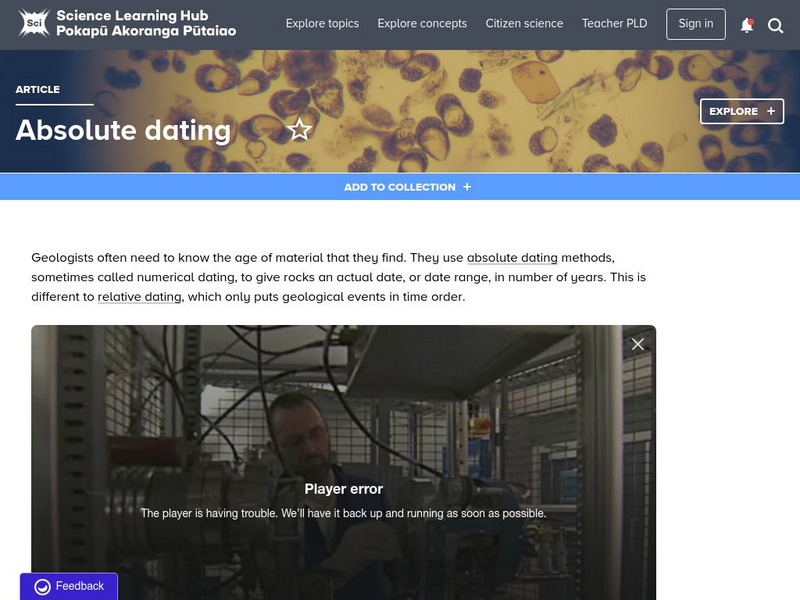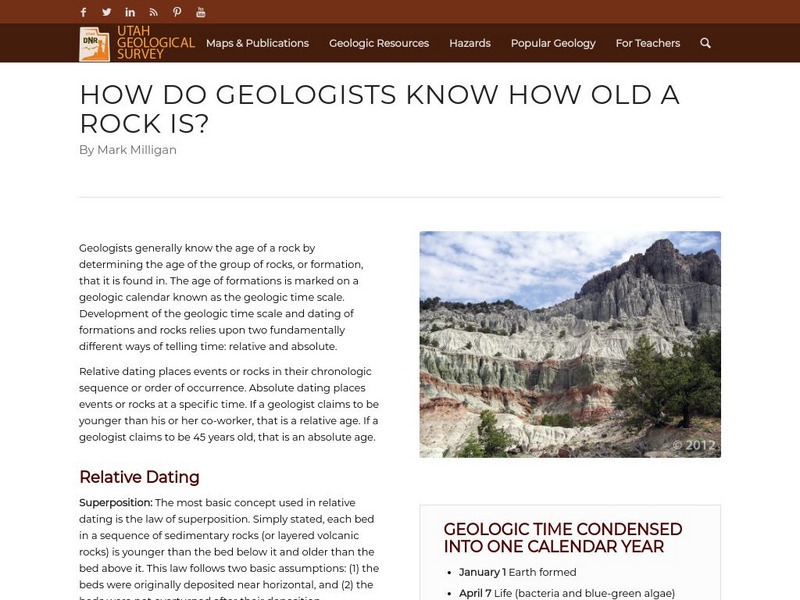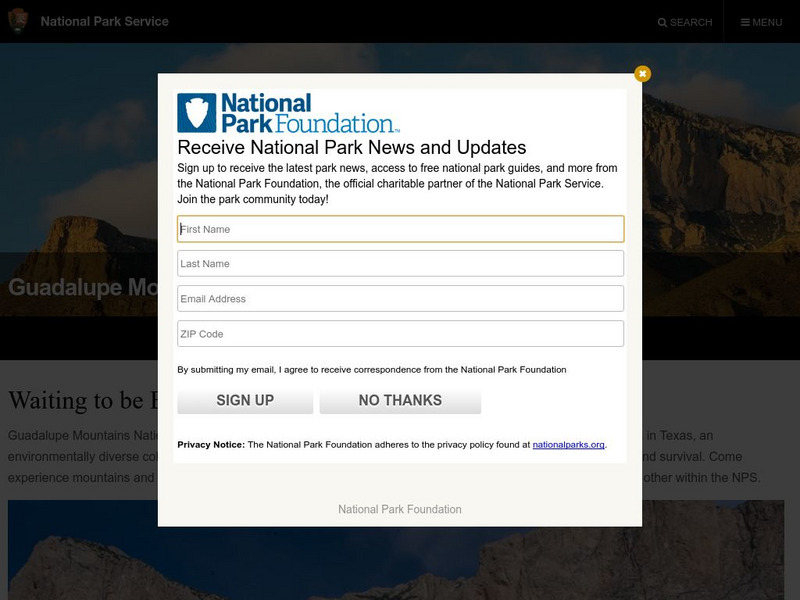University of California
Ucmp: A Relative Dating Activity
An learning activity to help learners grasp the concept of relative dating and geologic time.
University of North Carolina
University of North Carolina: Radiometric Dating
A huge site from The University of North Carolina regarding radiometric dating, how it works, inaccurate methods, Carbon-14 dating, and lots more.
Other
University of Waikato: Science Learning Hub: Absolute Dating
Explains what absolute dating is as compared to relative dating and how they can work together. The characteristics of several different radiometric methods are compared. Includes three short videos and an interactive where students...
University of California
University of California Museum of Paleontology: Fossil Evidence
Understanding Evolution provides evidence for evolution using fossils. There are also links to lesson plans.
Smithsonian Institution
National Museum of Natural History: Paleobiology: Absolute Dating
An explanation of radiometric or absolute dating of geological formations based on using the half-life of radioactive elements to figure out how old given rock layers are. A link on the left provides information about relative dating as...
Science Struck
Science Struck: The Meaning of Index Fossils Explained
Explains the importance of index fossils for the dating and chronology of events in the fossil and geological records. Discusses uses and examples of index fossils in the Cenozoic, Mesozoic, and Paleozoic Eras.
Other
Planetary Society: Relative and Absolute Ages in Histories of Earth and the Moon
A lengthy scholarly article that discusses the geologic time scale, its history of development, age-dating events that occurred in different eras, and how absolute and relative dating are used to assess the ages of the Earth and Moon....
Northern Arizona University
Land Use History of North America: Fossil Pollen (Palynology)
Use this site to learn why fossil pollen is a useful tool for determining paleoclimates.
US Geological Survey
Relative Time Scale
This is a good resource for anyone who wants to understand the historical development that led to our understanding of relative dating. This site also has links to index fossils and a table of geologic time.
Other
Utah Geological Survey: How Do Geologists Know How Old a Rock Is?
Geologists generally know the age of a rock by determining the age of the group of rocks, or formation, that it is found in. The age of formations is marked on a geologic calendar known as the geologic time scale. Development of the...
Other
How to Date a Fossil
Radiometric dating, fission-track dating, and amino-acid dating are explained in this succinct site.
Curated OER
National Park Service: Guadalupe Mountains
For over 10,000 years folks have been drawn to the Guadalupe Mountains in western Texas originally for its beauty, resources, and in more recent years its history. One of the most fascinating features to this national park is that in the...
Curated OER
National Park Service: Guadalupe Mountains
For over 10,000 years folks have been drawn to the Guadalupe Mountains in western Texas originally for its beauty, resources, and in more recent years its history. One of the most fascinating features to this national park is that in the...
US Geological Survey
The Numeric Time Scale
This is a good source for getting an in-depth description of using radioactive decay to measure the ages of rocks. In addition to describing the process of radiometric dating, this resource also includes a geologic time scale and four...
Other
Wbur: New England's Electric Power Grid Is Undergoing a Transformation
This article discusses New England's developing hybrid power grid, a network that relies on a variety of energy resources, including fuels and alternative energy sources and technologies. The ongoing transformation to renewable energy is...
US Geological Survey
U.s. Geological Survey: Geologic Time
A discussion of geologic time, how scientists use the concept, and how they have determined its span.













